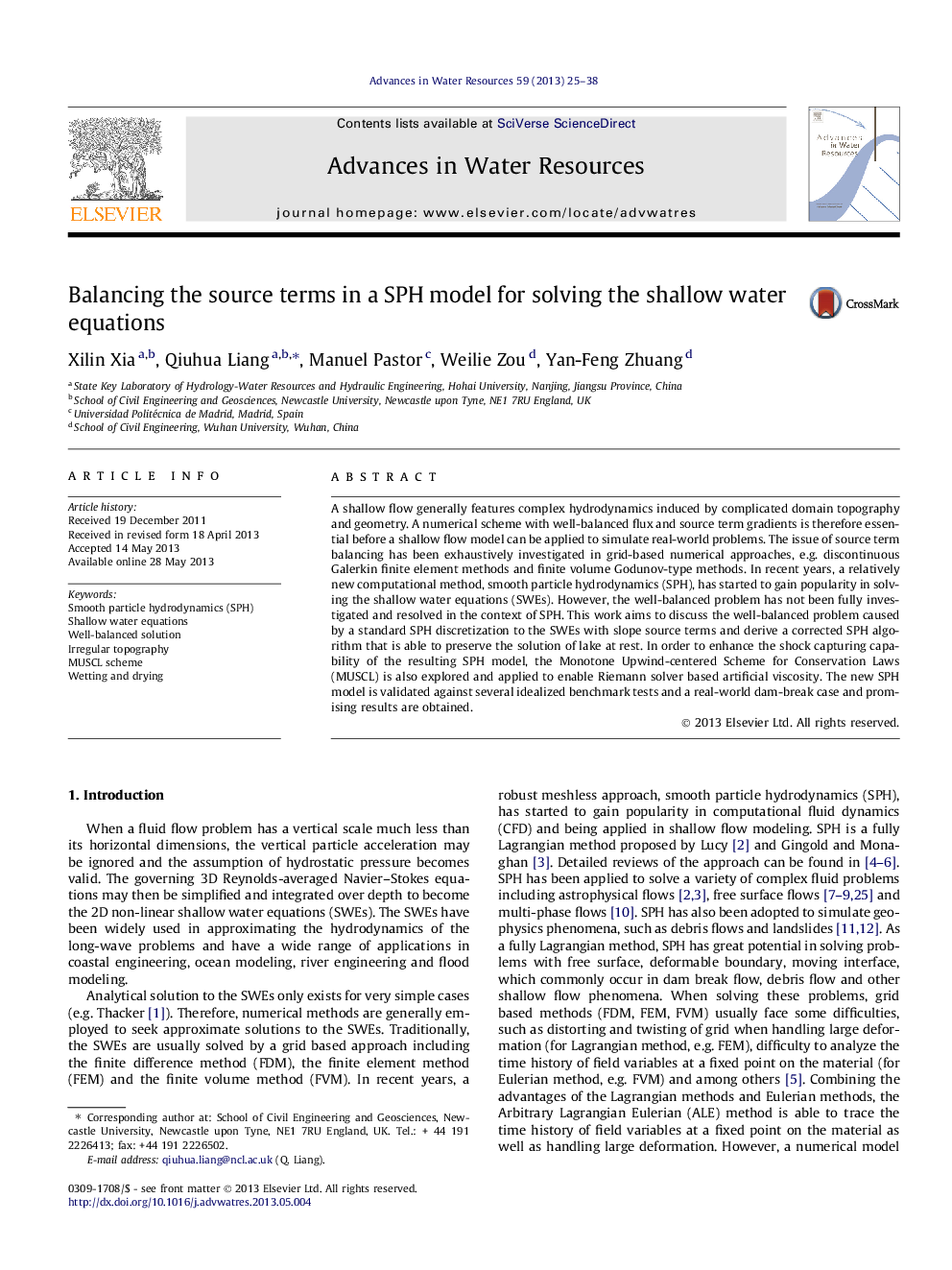| Article ID | Journal | Published Year | Pages | File Type |
|---|---|---|---|---|
| 4525678 | Advances in Water Resources | 2013 | 14 Pages |
•A new SPH model is presented for solving the 2D shallow water equations.•Well-balanced issue is thoroughly discussed in the context of SPH discretization.•Corrected SPH formulation is derived to ensure well-balanced solution.•The MUSCL approach is applied to enable Riemann solver based artificial viscosity.•Local bed modification method is proposed to prevent negative water depth.
A shallow flow generally features complex hydrodynamics induced by complicated domain topography and geometry. A numerical scheme with well-balanced flux and source term gradients is therefore essential before a shallow flow model can be applied to simulate real-world problems. The issue of source term balancing has been exhaustively investigated in grid-based numerical approaches, e.g. discontinuous Galerkin finite element methods and finite volume Godunov-type methods. In recent years, a relatively new computational method, smooth particle hydrodynamics (SPH), has started to gain popularity in solving the shallow water equations (SWEs). However, the well-balanced problem has not been fully investigated and resolved in the context of SPH. This work aims to discuss the well-balanced problem caused by a standard SPH discretization to the SWEs with slope source terms and derive a corrected SPH algorithm that is able to preserve the solution of lake at rest. In order to enhance the shock capturing capability of the resulting SPH model, the Monotone Upwind-centered Scheme for Conservation Laws (MUSCL) is also explored and applied to enable Riemann solver based artificial viscosity. The new SPH model is validated against several idealized benchmark tests and a real-world dam-break case and promising results are obtained.
